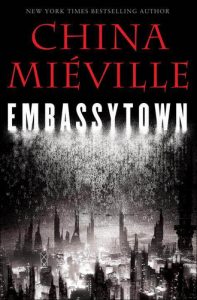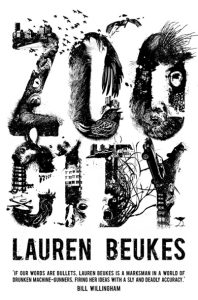Shape Catcher
This isn’t exactly brand-new stuff, but this website is an awesome tool for anyone who presents writing on the internet. Most of the time the general characters on your keyboard are good enough for you, but if you need a special character, visit Shape Catcher, draw your character in the box, and the site will spew out code for all the characters it can find that might be what you’re looking for. Chances are, if there’s code for it, Shape Catcher will find it.
 Daniel Abraham: A Private Letter from Genre to Literature
Daniel Abraham: A Private Letter from Genre to Literature
Genre writer Daniel Abraham writes an elegant letter from genre books to mainstream books. I for one enjoy genre books and mainstream books, and it’s nice to see a new way of presenting the fact that neither one should be snubbing the other. Whether you read genre, mainstream, or both, take a minute to read this letter.
Chuck Wendig: The Seduction of Self-Publishing
There are a lot of good reasons to self-publish. There are a lot of good reasons not to. There are a lot of bad reasons for both options as well. Chuck Wendig, a self-published author himself, talks about the seduction of self-publishing, why he’s glad he didn’t have it as an option five years ago, and why he’s glad he has the option now. If you’re considering the self-publishing path, take a look at this post. It’s rational in a debate that has a lot of irrationality on both sides.
Galley Cat: American Booksellers Association Attacks Amazon’s Price Check App
You’ve heard about Amazon’s new app, right? The one that gives shoppers a $5 incentive if they scan the barcode of a physical book with their smartphones and then buy in on Amazon? This is the ABA’s response to that. In some ways, Amazon’s idea is like price-matching offers or coupon clipping: it’s a way for people to save money. On the other hand, it gives you an incentive to go into a store, use its space, its personnel, and its merchandise to find what you want, and give that store nothing in return. It’s basically a way of saying: “Go have Joe do all my work for me, then I’ll give you want you want.” Amazon gets the reward for the store’s efforts. Not illegal, certainly, but it doesn’t exactly thrill me either. Still, I’m not surprised. This response from the ABA is a little like that: not explicitly outraged, because this is the sort of thing the ABA has come to expect from Amazon, but peeved nonetheless.
Jessica Hische: Inspiration vs. Imitation
Jessica Hische—a letterer, illustrator, and designer—writes about the line between inspiration and imitation. What’s the difference between being inspired by someone’s work and imitating it? Hische speaks in terms of illustration and design, but the same principles apply to writing. It’s sometimes a fuzzy line—what one person thinks is a ripoff another person may think is a fresh take on old ideas—but it’s one you should consider. Are you imitating someone for the sake of learning something? Wonderful. Are you imitating someone for the sake of selling something? Probably not the best idea.
Image by Simon Howden via FreeDigitalPhotos.net









